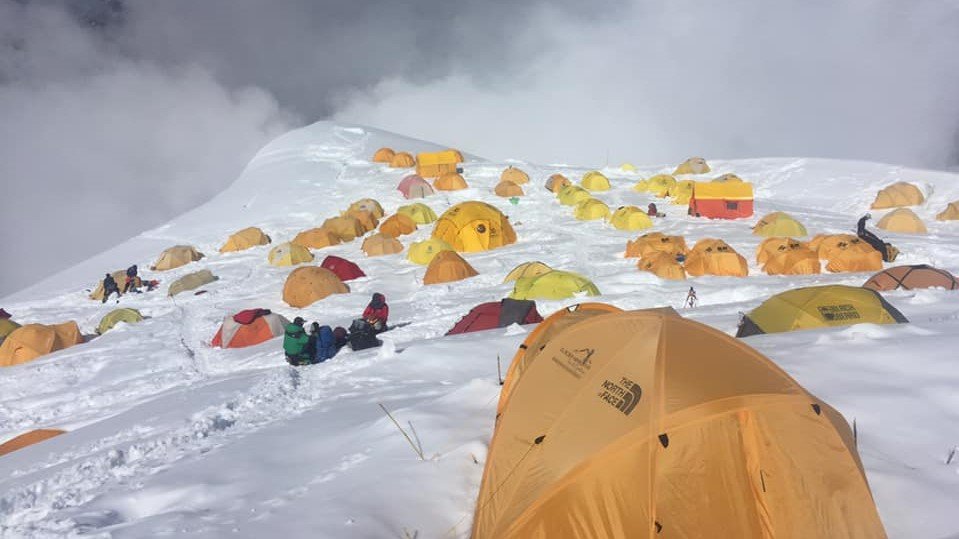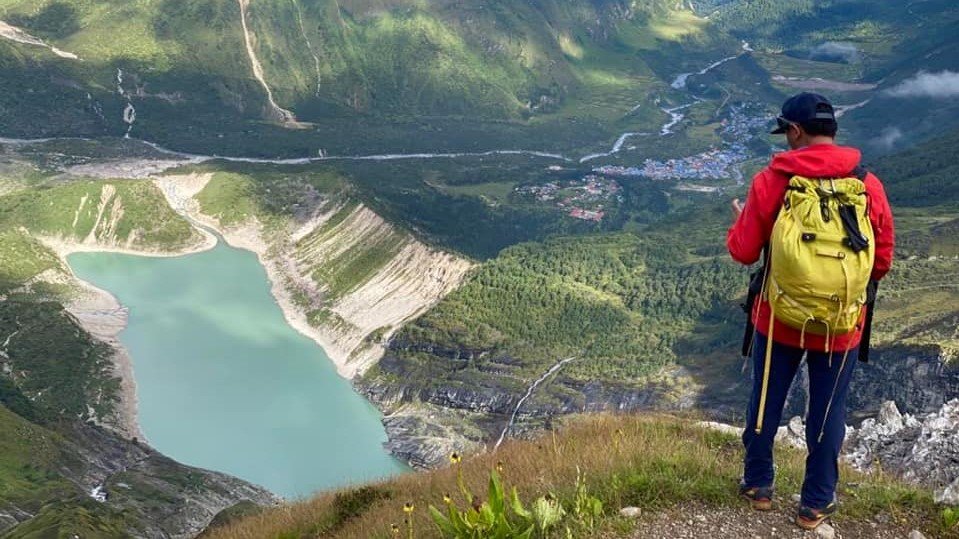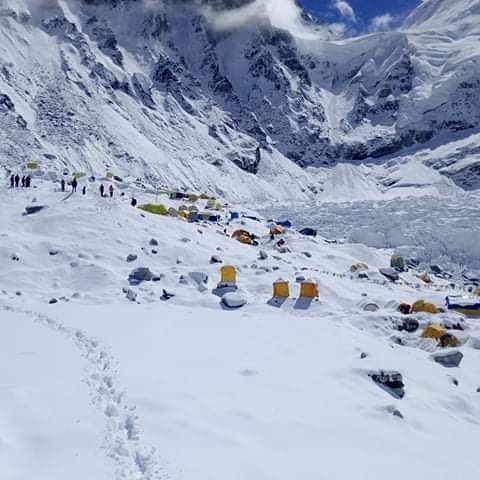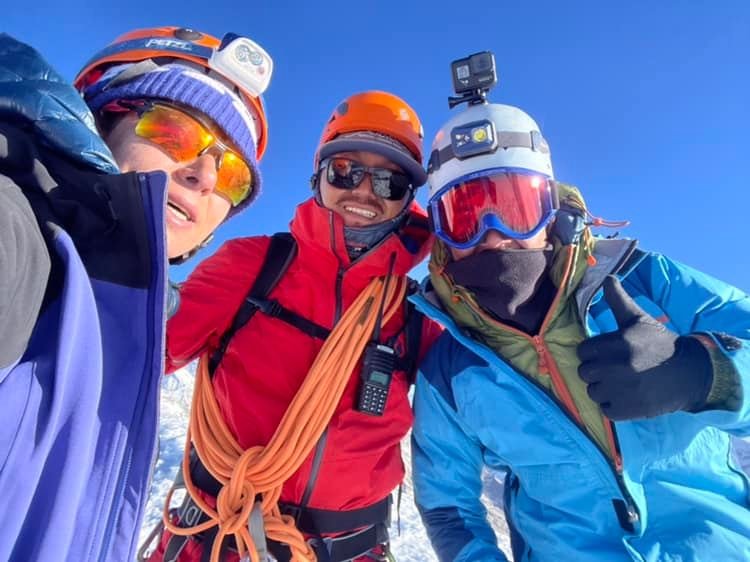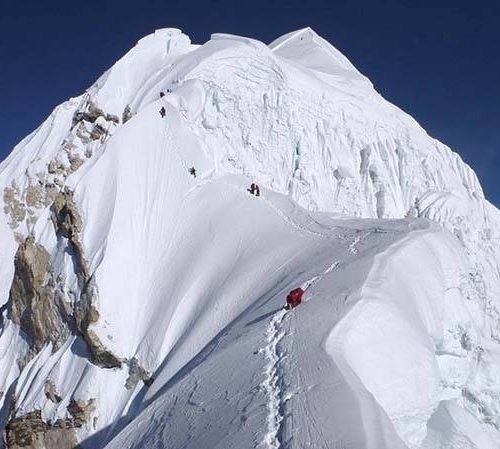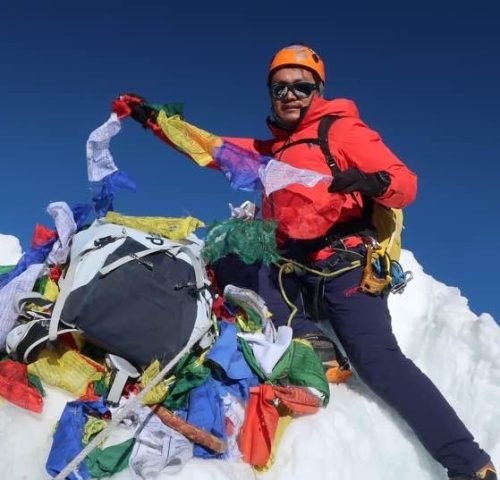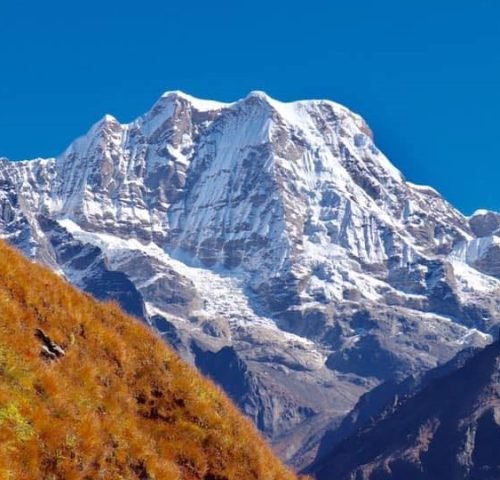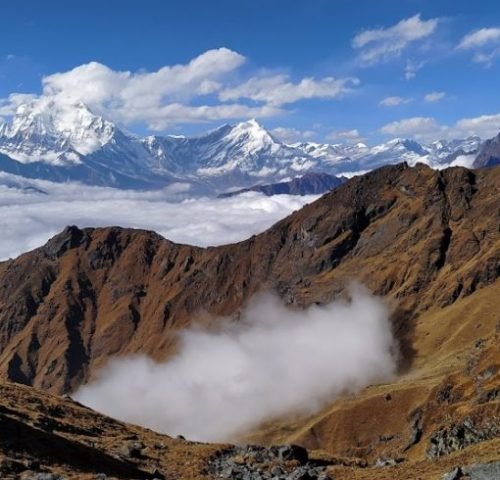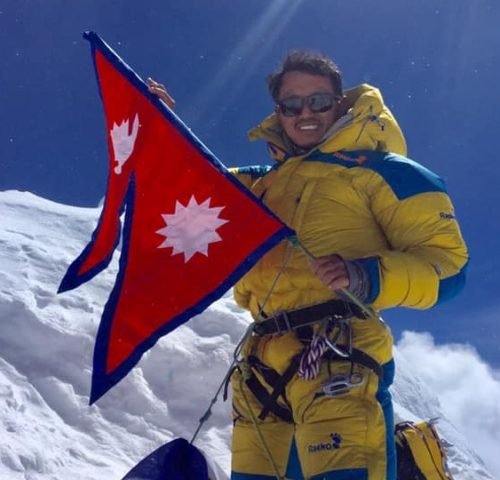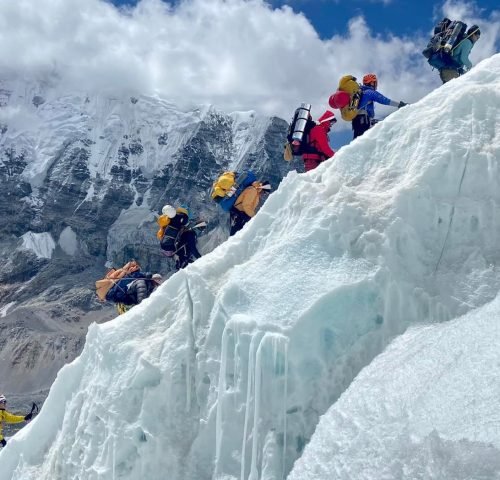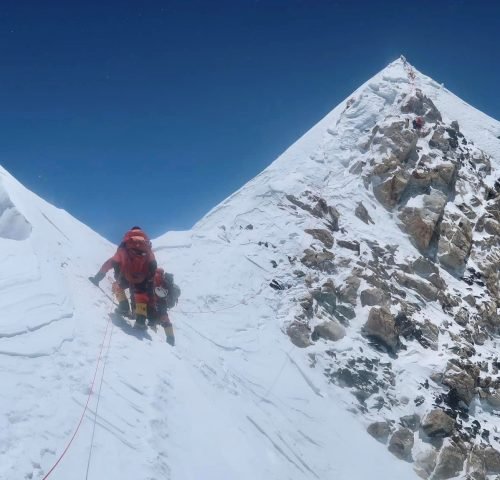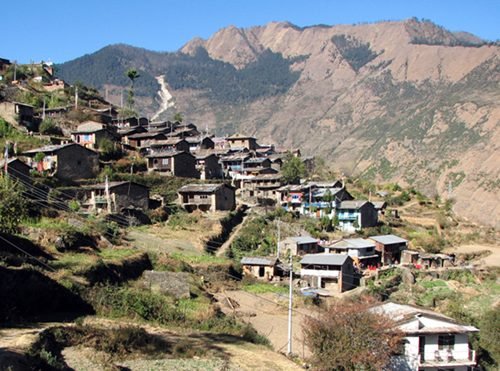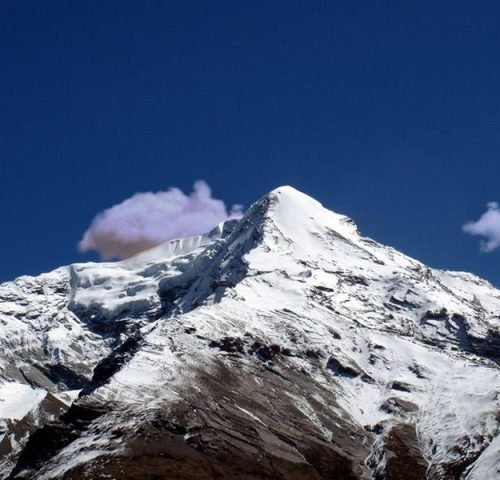Overview
Manaslu also known as Kutang is the eight highest mountain in the world at 8,163 metres (26,781 ft) above sea level. It is in the Mansiri himal, part of the Nepalese himalaya in the west-central part of Nepal. The name Manaslu means "mountain of the spirit" and is derived from the Sanskriti word manasa, meaning "intellect" or "soul". Manaslu was climbed on May 9, 1956 by Gyalsen Norbu Sherpa & Imanishi, member of Japanese expedition. Manaslu, located in Gorkha district of Nepal. The geography here is very beautiful, while the Himalayan culture, monastery and stupas yak and many wildlife found here have made this place very attractive.
There are two routes to reach here, the base camp can be reached by reaching Samagaun via Gorkha Arugat, while the other route is to reach Samagaun by passing Larke via Lamajung Besisahar. Generally, the best time to climb this mountain is August to September. To climb Mt Manaslu, climber must be mentally and physically fit and have already undergone basic training and climbed at least 6000 meters of mountain peak.
Although Manaslu is not technically difficult mountain, it is considered difficult due to height, there are only four camps including Base Camp, Camp 2, Camp 3 and Camp 4. Many mountains can be seen from this mountain, while in the northern direction, the Tibet Autonomous Region of China can also be seen.
Details Itinerary
Day 01: Arrive in Kathmandu (1320m)
Arrival in Kathmandu. Our representative pick up and drop you to the hotel O/N Hotel.
Day 02: Preparation, briefing for Expedition
These day we are busy for briefing about expedition, documentation, visa application, last minute shopping and preparation for departure to expedition. We’ll also introduce to our Nepali crew coming with you for expedition. Hotel. BLD
Day 03: Drive to Aarughat by private vehicle.
Your trekking guide will come at your Hotel in the early morning to pick you up, from there we’ll have an 6-7 hour depending upon road condition driving journey to Arughat. O/N Tea house (B,L,D)
Day 04: Trek to Soti Khola (775m) 6 hrs.
We will start our journey following the Budhi Gandaki River toward its point of origin. We’ll be passing the village of Morder and Simre to reach at Arkhat River. Then we ascend gently towards Kyoropani And Soti khola. O/N hotel (B,L,D)
Day 05: Trek to Machha Khola (900m) 5-6 hrs.
The trek start descending slowly until you climb again to mountain ridge to Almara. Then Pass jungle trail to arrive at the village called Riden Gaon. The valley here cuts into another side of the river to enter Budhi Gandaki. Then at Lambesi, the trail follows down to the sandy river bed of Budhi Gandaki. O/N hotel (B,L,D)
Day 06: Trek to Jagat (1340m) 6 hrs.
After crossing Machha River and Khrola besi, there is a hot spring called "Tatopani". The trail follows forested area after towards Dovan. Below Dovan, there is a huge rapid at Budhi Gandaki. As the elevation increases, the rapids and the scenery undergoes a complete transformation. At Jagat, there is a police check-post where your trekking permit will be checked by the official and we stay overnight at Jagat. O/N hotel (B,L,D)
Day 07: Trek to Ngyak (2310m) 6 hrs.
After ascending to a terraced hill of Saguleri and view of Sringi Himal (7177 m) can be seen from very near. Then we continue towards Sirish Gaon, Gandaki valley narrows from herewith soaring precipitous walls. O/N hotel (B,L,D)
Day 08: Trek to Ghap (2100m) 6 hrs.
We’ll be following the trail upstream of Deng River - a tiny village of 4 houses. We walk through a newly built rock tunnel from here, thus avoiding the traditional steep climb. At Ghap, the Tibetan culture begins with Mani stones and Stupas all around. O/N hotel (B,L,D)
Day 09: Trek to Lho (3200m) 6 hrs.
After crossing the wooden bridge over the river Budhi Gandaki, we follow the path lined with houses that are interspersed with cultivated fields. At Namrung, there is a police check post and again our permit and belonging will be checked if necessary. After Namrung, across the Hinan river originating from Linda Glacier and continue on to Sho astonishing view of Naike peak, Manaslu north (7,774m) and Manaslu (8,150m) which are clearly visible if weather is clear. O/N hotel (B,L,D)
Day 10: Trek to Samagau (3500m) 6 hrs.
Walking along with upper reaches of Lho, with the view of snowy peaks Manaslu ahead of us, we will pass the new monastery then ascend through light forests next to a small river to reach the Tibetan settlement village called Shyla, where the villagers are often out in their fields. Another few hours of trekking through classic alpine scenery leads us to Samagaun. O/N at hotel (B,L,D)
Day 11: Rest day at Sama Gaon for acclimatization
Rest day in Sama Gaon for acclimatization. Visit surrounding area. O/N Camping (B,L,D)
Day 12: Trek Sama Gaon to Manaslu Base Camp
Trek for 4-5 hours to reach Manaslu Base Camp from Sama Gaon.
Day 13-35: Climbing Period of Manaslu Expedition (8163m)
Day 36: Fly Kathmandu Trek Base camp to Samagaun
If you want to fly by helicopter then extra charged applied, Trek down to Sama Gaon. O/N hotel (B,L,D)
Day 37: Fly Trek to Namrung village
Trek back to Namrung village. O/N hotel (B,L,D)
Day 38: Trek to Philim village
Trek back to Philim. O/N hotel (B,L,D)
Day 39: Trek to Machha khola
Trek back to Machha khola. O/N hotel (B,L,D)
Day 40: Trek to Arughat
Trek back to Arughat. O/N hotel (BLD)
Day 41: Drive back to Kathmandu
Drive by private vehicle to reach Kathmandu. It takes approximately 7-8 hours.
Day 42: Rest in Kathmandu
Today you’ll have free in Kathmandu. You can explore cultural heritage inside Kathmandu, At evening we’ll host farewell-Celebration dinner with local typical cultural experience in Nepali Restaurant adjoining our crew that were in the expedition time with you. Overnight at Hotel (B,D)DAY 50
Day 43: Departure to your home country
Our staff will drop you at international airport by private vehicle.
Cost Details
WHAT'S INCLUDED
• 4 Nights Hotels accommodations in Kathmandu at 3 star Hotel on Bed & Breakfast plan (before & after expedition).
• All land transportation arrival and departure transfer services to and from Airport both Domestic and International with other necessary surface transport as per itinerary.
• expedition members, Liaison officer & Expedition staffs.
• Transport of food supply & expedition equipment to Base Camp & back.
• Expedition Permit fee of Mt. Manaslu.
• Manaslu conservation area project Entry Permit, Local Grassland Permit Fees
• Full board in lodges during trekking to base camp and back.
• All kitchen tent, store tent, dining tents, toilet tent, table, chairs & cooking utensils for BC.
• Fresh Food (we serve hygienic foods) and fuel at Base Camp.
• Base Camp single sleeping tent & Mattress for each member.
• High Tents above Base Camp. C1, C2. High altitude food and fuel above Base Camp.
• Satellite Phone available at Base Camp, but nominal charge for use.
• There will be one personal professional climbing guide while climbing. one Sherpa climber for one person
• Service of Government Liaison Officer.
• Service of cook and kitchen boy at Base Camp.
• Insurance, Equipment allowance, daily wages of cook, kitchen boys & Liaison officer.
• 2 Expedition duffel bag for each member.
• Generator or Solar panel at Base Camp for light and charging.
• Agency service charge and Tax.
WHAT'S NOT INCLUDED
• International airfare from/to your country.
• Nepal entry visa fee (can be obtained at the airport at upon arrival).
• Lunch and dinner during your stay in Kathmandu.
• Hotel accommodation after 4 nights stay in Kathmandu.
• Personal climbing gear and equipment above Base Camp.
• Personal insurance such as travel, accident, medical, emergency evacuation & lost luggage.
• Permit fees & customs charges, etc. for SAT phone, communication equipment & commercial filming.
• Expenses of personal nature such as drinks, laundry, postage, telephone etc.
• Tips and summit bonuses ($1500 is expected if summited)
Map
FAQs
1. How high is Mnasalu Base Camp ?
Lorem Ipsum is simply dummy text of the printing and typesetting industry. Lorem Ipsum has been the industry's standard dummy text ever since the 1500s, when an unknown printer took a galley of type and scrambled it to make a type specimen book
2. How fit do I need to climb mount Manaslu ?
Lorem Ipsum is simply dummy text of the printing and typesetting industry. Lorem Ipsum has been the industry's standard dummy text ever since the 1500s, when an unknown printer took a galley of type and scrambled it to make a type specimen book.
3. Where am I sleeping at night ?
Lorem Ipsum is simply dummy text of the printing and typesetting industry. Lorem Ipsum has been the industry's standard dummy text ever since the 1500s, when an unknown printer took a galley of type and scrambled it to make a type specimen book.
4. Which is the best season to climb Manaslu ?
Lorem Ipsum is simply dummy text of the printing and typesetting industry. Lorem Ipsum has been the industry's standard dummy text ever since the 1500s, when an unknown printer took a galley of type and scrambled it to make a type specimen book.
5. Is drinking water easily available during the trek ? Is it safe ?
Lorem Ipsum is simply dummy text of the printing and typesetting industry. Lorem Ipsum has been the industry's standard dummy text ever since the 1500s, when an unknown printer took a galley of type and scrambled it to make a type specimen book.
6. How do we Travel from Kathmandu to Manaslu basecamp ?
Lorem Ipsum is simply dummy text of the printing and typesetting industry. Lorem Ipsum has been the industry's standard dummy text ever since the 1500s, when an unknown printer took a galley of type and scrambled it to make a type specimen book.
7. What food do we get in mountain?
Lorem Ipsum is simply dummy text of the printing and typesetting industry. Lorem Ipsum has been the industry's standard dummy text ever since the 1500s, when an unknown printer took a galley of type and scrambled it to make a type specimen book.
8. What happens if I get sick in the mountain?
Lorem Ipsum is simply dummy text of the printing and typesetting industry. Lorem Ipsum has been the industry's standard dummy text ever since the 1500s, when an unknown printer took a galley of type and scrambled it to make a type specimen book.
9. what kind of accommodation we can get during the trek ?
Lorem Ipsum is simply dummy text of the printing and typesetting industry. Lorem Ipsum has been the industry's standard dummy text ever since the 1500s, when an unknown printer took a galley of type and scrambled it to make a type specimen book.
Manual Notes:
Lorem Ipsum is simply dummy text of the printing and typesetting industry. Lorem Ipsum has been the industry's standard dummy text ever since the 1500s, when an unknown printer took a galley of type and scrambled it to make a type specimen book. It has survived not only five centuries, but also the leap into electronic typesetting, remaining essentially unchanged. It was popularised in the 1960s with the release of Letraset sheets containing Lorem Ipsum passages, and more recently with desktop publishing software like Aldus PageMaker including versions of Lorem Ipsum.
